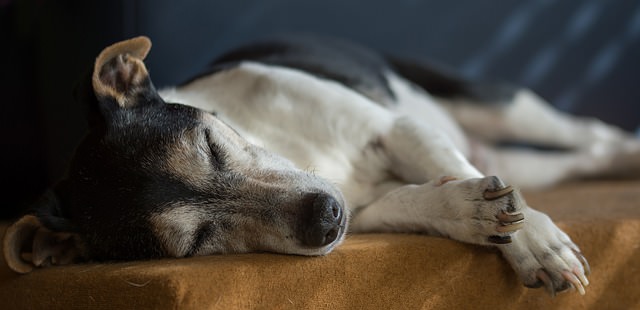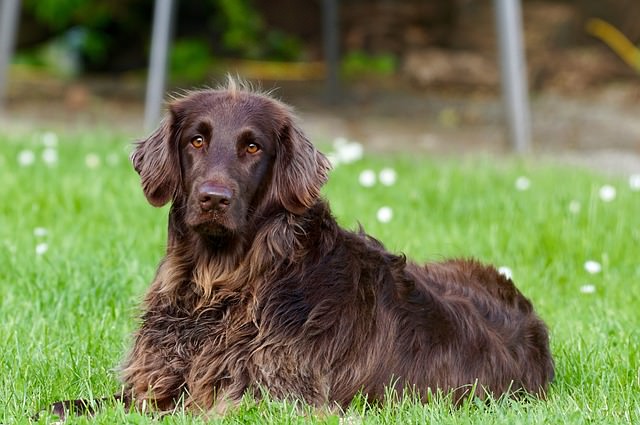The word “cancer” might be one of the scariest words in the English language, especially when it’s aimed at your beloved fur child. Unfortunately, cancer is responsible for the deaths of about half of all dogs over the age of 10. The good news is that many types of cancer, if they are caught early enough, are highly treatable.
The dog’s overall well-being is the primary concern during treatment, so the process is not quite as grueling as what humans go through. While your dog’s hair may thin, it will not fall out entirely, and symptoms are generally milder than what humans experience. If treatment is not an option due to expense or the type of cancer, there are still things you can do to help your dog live out the rest of his days comfortably.
The following information should help you through the process of possibly identifying, treating, and helping your dog through the cancer process, but it is not intended to replace the experience of a trusted veterinarian.

Symptoms
If you’re reading this article, it’s possible your dog hasn’t received a cancer diagnosis, but he is displaying symptoms that you’re concerned about. Cancer symptoms will vary depending on the type, but some of the symptoms associated with cancer include: lumps or bumps, decreased appetite, decreased mobility, lethargy, collapse, inability to urinate, coat changes, weight loss, and behavioral changes.
Types
Dogs are prone to many different types of cancer. The following is a list of the most common types; if you click on the name, it will take you to a website with more information about that specific type. The most common types of canine cancer include: melanoma, osteosarcoma, lymphoma, basal cell carcinoma, mast cell tumors, squamous cell carcinoma, hemangiosarcoma, chondrosarcoma, insulinoma, thyroid cancer, lung cancer, mammary tumors, anal sac adenocarcinoma, and lipoma.
Breeds
Unfortunately, some dog breeds are far more prone to cancer than others. The dog breeds with the highest risk of developing cancer in their lifetimes include: Bernese Mountain Dog, Boxer, Cocker Spaniel, Doberman Pinscher, German Shepherd Dog, Giant Schnauzer, Golden Retriever, Great Dane, Pug, Rottweiler, Scottish Terrier, Shar Pei, Shetland Sheepdog, Standard Poodle, and West Highland White Terrier.
What to do when you learn your dog has cancer
The most important thing to do when you learn your dog has cancer is to stay calm. Dogs pick up on our moods, though they don’t always understand them. If you suddenly get sad every time you look at your dog, they might think they’ve done something wrong to make you so sad. They probably already don’t feel good and don’t understand why – try not to let your emotions make them feel worse. Deep breathing exercises are a great way to calm yourself down during stressful situations.
The second thing you should do is get a second opinion. It doesn’t happen often that cancer is misdiagnosed, but it can happen. More importantly, talking to more than one vet will give you more information about your treatment options and the associated costs. Maybe different vets have different success rates with different types of cancer – you won’t know until you ask.
The third thing you should do is research your options. This means not only finding out what treatments are best but what they will cost and who is the best at treating them. If money is a factor, you can apply for Care Credit, a credit card specifically for dealing with health issues, or ask your vet if they do payment plans. If your research shows that treatment is unlikely to provide your dog with a significantly longer life while retaining a good quality of life, or if the cost of treatment is prohibitive, you might choose to forgo treatment and just enjoy the time you have left together.
The fourth thing you should do is to review your dog’s diet. Many veterinarians believe that diet can contribute to and even cause cancer. Most holistic vets recommend stopping feeding commercial foods such as kibble or canned foods entirely and switching your dog to a homemade diet with human-grade ingredients. Most dog foods are made with ingredients deemed unsuitable for human consumption – if ever there was a time to make the switch to fresh food for your dog, now is the time. Even if it won’t extend their life, they will enjoy it more and may be more likely to eat despite a waning appetite. Isn’t providing a better quality of life for your dog worth the hassle of making his food yourself?
The final thing you should do is make a bucket list for your dog. Even if your dog recovers from his cancer scare, now is the best time to come up with a list of things your dog would enjoy and make a concerted effort to give them as much quality time as you can for however long they have left, be that days, months, or years.
One thing to keep in mind is that you should stick to both your dog’s regular routine and his new treatment plan as close as possible. Sticking to the treatment plan increases the success rate of the treatment, and adhering to your dog’s normal routine as much as possible will help reduce his anxiety about any other changes that are happening.

Treatment options:
Traditional or homeopathic treatments may be done individually or in combination for the best results.
Traditional
Traditional cancer treatments vary depending on the type and location of cancer, but they typically involve some combination of steroids to reduce the size of the tumor, surgery to remove as much of the cancer as possible, radiation to reduce or eliminate the tumor, and chemotherapy to attack cancer cells from inside the dog.
Homeopathic
More and more vets are embracing a homeopathic approach to cancer, possibly instead of but usually in conjunction with more traditional forms of therapy. Examples of homeopathic treatments include: a fresh diet low in carbohydrates and high in vegetables; increasing exercise, love, and affection; decreasing exposure to chemicals, pesticides, and stress; increasing fluid intake; acupuncture; massage; topical liniments; medicinal mushrooms and herbs; vitamins and antioxidants; and detoxification.
How to keep your dog comfortable
While cancer treatments are not as harsh for dogs as they are for people, your dog will need some help staying comfortable during the treatments (or lack thereof, if you choose to go that route). You want to do everything you can to maintain or improve your dog’s quality of life.
One of the most important things you can do is to give your dog his medication on time every day. Whether your dog is receiving chemotherapy, steroids, or pain pills, giving them at the appropriate time makes a huge difference in their odds of recovery or current quality of life.
Pain management is crucial for maintaining your dog’s quality of life. You’ll want to learn the signs of pain in your dog and speak to your vet if you think your dog’s current pain management routine is no longer working. Signs of pain in dogs include: limping, being more or less vocal than usual, loss of appetite, panting, restlessness, change in sleep habits, aggression, avoidance behaviors, or being needier or clingier than usual.
Dogs battling cancer are likely to get cold easier than healthy dogs. You may want to invest in a sweater, heated dog bed, or heat lamp if your dog seems to shiver more than usual, and certainly bring them in from outside during cold weather.
You may need to spend a lot of time and effort getting your dog to eat and drink. Broth, whether it’s made from bones or vegetables (just avoid these items, as they are toxic for dogs), can be a tasty way to keep your dog hydrated if they don’t want to drink water. You may need to change your dog’s diet if they lose their appetite and show less interest in food. While this may be frustrating for you, it is imperative for your dog’s quality of life that they stay hydrated at a minimum and hopefully fed, as well.
Maintaining an exercise routine for as long as your dog can handle it will benefit him greatly and help to keep him comfortable. While it may be tempting to let him lie around more, light exercise is actually good for their joints, not to mention their state of mind. You may need to take shorter walks than usual, but your dog will benefit from them all the same.

Tips for dogs in remission
With any luck, your dog’s cancer will go into remission after treatment. Does that mean your dog is completely cured? Not necessarily. While there may not be any signs or symptoms of cancer any longer, there could still be some cancerous cells in your dog’s body waiting to come back and wreak more havoc.
There are two different types of remission. Partial remission means that treatment has killed off most of the cancer cells and any tumor has shrunk to at least half of its original size or at least stops growing. Complete remission means all signs and symptoms of the cancer are gone, though they could still return at any time.
The best ways to help keep your dog’s cancer in remission are to continue feeding him a high-quality natural diet and to maintain his weight. Also, be sure to enjoy every healthy day with your dog. Even if the cancer never returns, our fur children are here with us for such a short time that it’s important to appreciate every day with them.
Hospice care
Sadly, there may come a time when treatment doesn’t seem to be working and the battle turns instead to making sure whatever time your dog has left is comfortable. You may want to create a bucket list, if you haven’t already, and focus on spending as much quality time with your dog as possible.
In any case, you’ll want to minimize any pain or distress that your dog may be in and talk to your vet about implementing the best pain management strategy they can come up with. You’ll want to make sure your dog has a comfortable bed surrounded by their favorite things. Your dog may become incontinent, so you’ll want a plan on how to manage that situation.
You may want to consider what signs your dog may give you to indicate he’s ready for euthanasia, if that’s an option you’re comfortable with. Some signs that your dog may be ready to cross the Rainbow Bridge are irritability, restlessness, confusion, loss of appetite or excessive thirst, loss of interest in his favorite activities, and seeking out unusual places to hide or sleep.
Conclusion
Take a deep breath. While cancer is scary, you should still have some time left with your dog to create some happy memories and final pictures. Enjoy life and love your dog while you can. You might even get lucky and still have many happy years left with your beloved fur child. In any case, you will know you did everything you can to give your dog the happy life he deserves.
